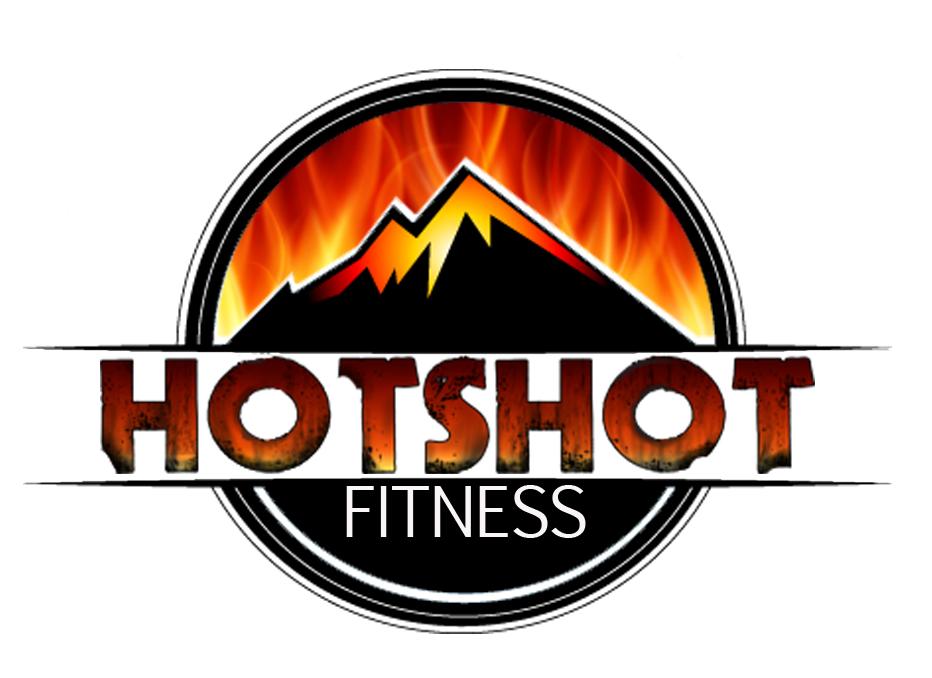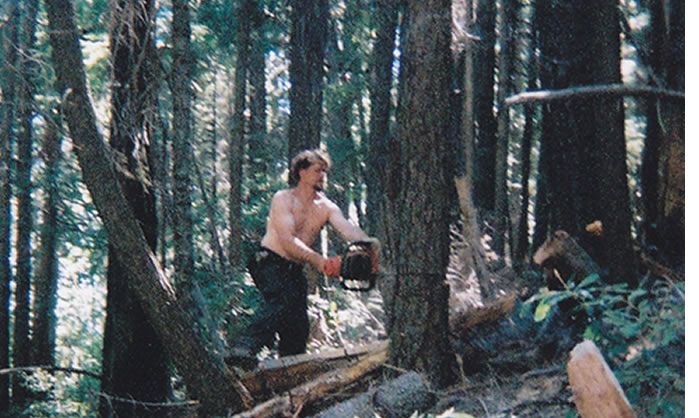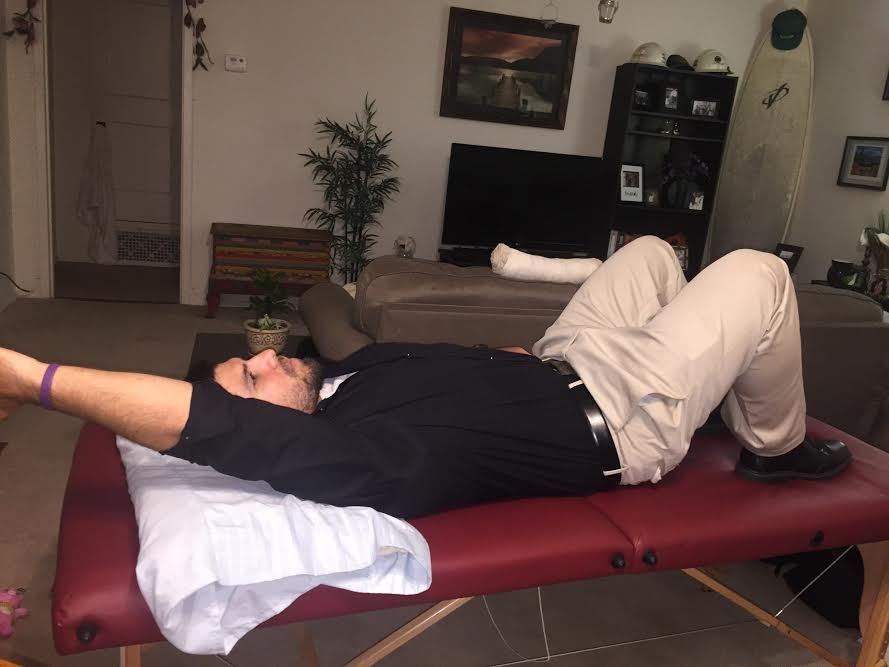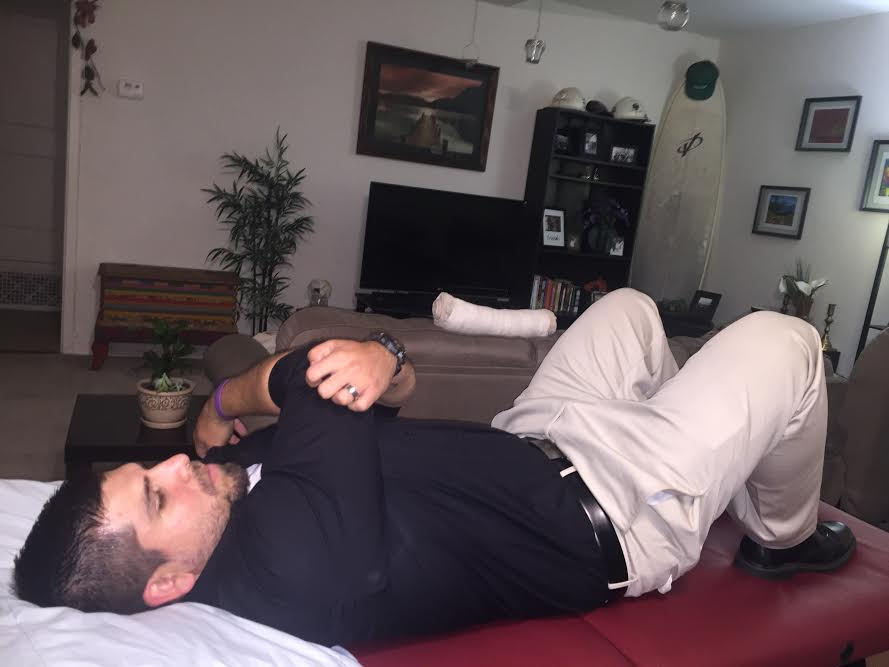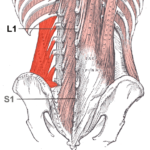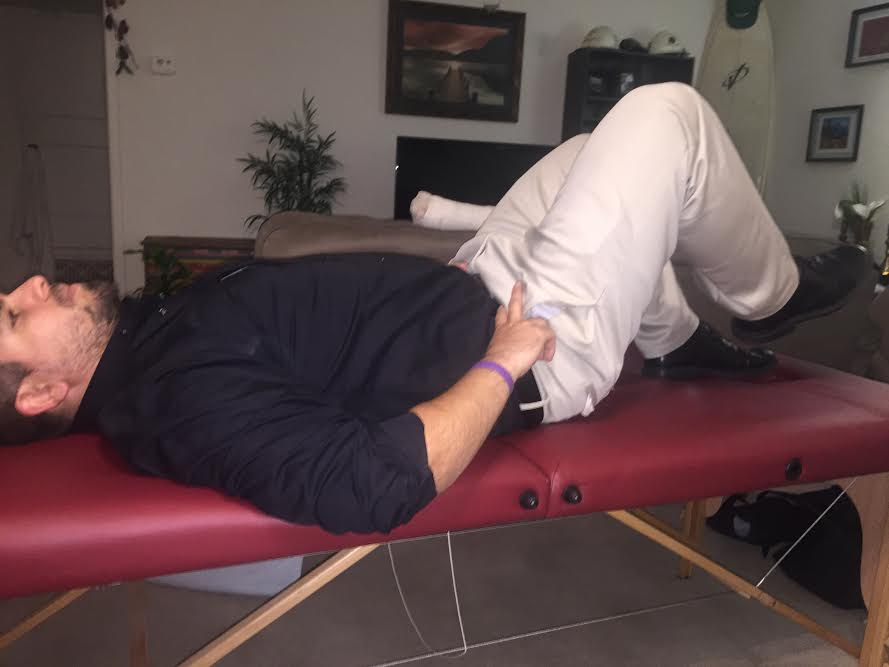Never heard of IFTTT? Well, boy oh boy, are you in for a treat today! IFTTT stands for “If This, Then That.” The site provides value by allowing geniuses and regular joes alike to come together and create ‘recipes’ that allow different services (e.g. Fitbit, Google Drive, Evernote, Dropbox, and hundreds of others) to connect with each other. You can think of a ‘recipe’ as just another name for an app.
As many of you know, Hotshot Fitness thinks highly of Fitbit products (in particular, the Aria Scale & the Charge HR). However, one of our biggest complaints was that the data it gathers is ephemeral. It vanishes into the ether after a week or two. So unless, you wanted to manually enter your data into a spreadsheet, you were S.O.L. Fortunately, IFTTT provides a way to store that information AUTOMATICALLY. By leveraging Google Drive, you can now store sleep logs, weight logs, and daily activity summaries to a spreadsheet. Now, if you wanted to say, visualize your weight loss efforts across a year, you could easily do that. Or you could run some statistical analysis on your sleeping patterns.
There are literally thousands of recipes, and more are added every day. It’s a great service that can help you not only achieve your fitness goals, but can also help you be more productive at work and home. Below, we have listed links to our favorite recipes.
Note: In order to view the recipes, you might need to sign-up for an account with IFTTT first.
Six Favorite IFTTT Recipes
- Track your fitbit sleep logs in Google Drive spreadsheet.
- Track your fitbit weight logs in Google Drive spreadsheet
- Add your daily fitbit summary to a Google Drive spreadsheet
- Get a reminder notification if you haven’t hit your goals by a certain time
- Store your Strava Routes in a Day One Journal
- Save your Strava Activities in a Google Spreadsheet
Public Service Announcement:
IFTTT provides quite a few recipes for automatically pushing out goal achievements (daily steps reached, etc.) across a variety of social platforms. Please, I implore you: think deeply about whether or not to activate these. There’s a lot of noise on the internet – will this just be contributing to that noise? Or does it bring information that others can benefit from? If we’re being honest, I believe that I do not need to learn via Twitter that you hit your daily goal. Nor do I believe that anyone else does. Not your mom, your boyfriend, or your weird Aunt Liz from Omaha. So please use those social recipes with care.
Sincerely,
Everyone on the internet
[This post appeared previously on the original Hotshot Fitness site. We had some folks ask about it, so we’re re-posting. Enjoy!]
These Ten Commandments were passed down to me by Captain Mark Davis, while I was a rookie sawyer / swamper with the Feather River Handcrew on the Plumas National Forest. Never in my life had I met a guy as colorful and unique as Captain Davis and I doubt I ever will. His stories were epic, and his endurance was legendary. He was a tall tale brought to life, and he left an impression on everyone he crossed paths with. He certainly wasn’t a man without faults, but in the two years I worked with him, he earned my lasting respect. He truly loved being a wildland firefighter and I always admired his love of the job. It was infectious.
I’m not sure if he’s the original author of this, but I believe that he either wrote or received them while serving on Yosemite National Park’s Helitack crew, no doubt longing to hear the ear-shattering screams of a red-lined Stihl, augured into a monster sugar pine. Sadly, Captain Davis’ career was cut short by a career-ending accident, but his commitment to the chain saw, and the strange bond that grows between a sawyer and his saw, will continue to be passed on. Davis would have rathered to be able to use his saw again than have to look at getting a workers compensation lawyer, but unfortunately, some accidents can not be reversed. So without further ado…
The Ten Commandments of Thy Chainsaw
- Thy saw is a temple, put only the best into it. 92 octane mixed to perfection.
- Thy saw breaths – keep its filter clean.
- Love thy chain for it does all the work, keep it sharp at all times, seek perfection in its sharpening.
- Keep thy bar straight and true, file off burs, clean out chain grooves and oil holes, keep its tip lubed.
- Keep thy needle bearings lubed as it reduces friction.
- Thou shall keep thy saw clean, never put it on the shelf dirty.
- Keep thy saw ready for battle at all times, know its tanks are topped off, and its chain ready to cut, then and only then may you rest the saw or yourself.
- Thou shall thoroughly clean around thy carburetor, piston cylinder, cooling fins, magneto, and air intake slits.
- Thou shall know thy saw, as one knows the members of their own body.
- Thy saw is an extension of one’s own self, seek oneness with it.
Captain Davis loved firefighting, but I think he loved being a sawyer the most. The violence, the power – everything about it drew him in, and it never let go. Even though his days of storming up and down the line, barking orders are past, those who served with him will remember him as the craziest son of a gun they ever met. If you are interested in starting your own sawyer journey then you cannot follow these ten commandments without getting yourself a chainsaw – these reviews of small chainsaws provide a great overview for anyone looking for their first chainsaw.
Are you drinking enough water? If you look like this guy after a five mile run – probably not.
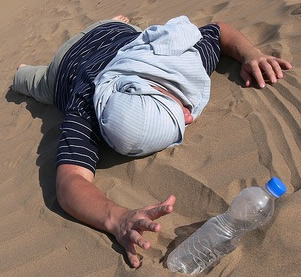 You’ve felt like a man stranded in the desert plenty of times before. Your mouth feels and tastes like a bottle of Gold Bond exploded in it. Your legs have morphed into inanimate stone pillars and continually cramp up, causing severe pain (you can find out what to do about leg cramps by following the link). Whenever you lick your lips, it tastes like the ocean. It’s all too obvious when we’re seriously dehydrated. But even mild dehydration can have serious implications.
You’ve felt like a man stranded in the desert plenty of times before. Your mouth feels and tastes like a bottle of Gold Bond exploded in it. Your legs have morphed into inanimate stone pillars and continually cramp up, causing severe pain (you can find out what to do about leg cramps by following the link). Whenever you lick your lips, it tastes like the ocean. It’s all too obvious when we’re seriously dehydrated. But even mild dehydration can have serious implications.
Think about it: Have you hit a plateau in your training? Or some days, just feel like you’re out of it? There’s a chance that your declining performance could be related to your hydration – or lack thereof. If you’re dehydrated, your performance will suffer. It’s as simple as that.
In a study in the Journal of Applied Physiology, researchers found that dehydrated subjects performed substantially worse during exercises when compared to previous performances when they were well-hydrated.
In another paper titled “Rehydration and Recovery after Performance” by Ronald Maughan, Ph.D., John B. Leiper and Susan M. Shirreffs, the authors write:
“Dehydration and the associated problem of hyperthermia are two major factors that limit exercise capacity. In prolonged exercise, especially when the ambient temperature and humidity are high, a progressive dehydration seems to be almost inevitable because fluid intake usually fails to match sweat losses. The resulting loss of performance is accentuated if the athlete begins exercise in a state of hypohydration. Even in events of short duration, where there is little sweat loss, performance is impaired if the athlete is not fully hydrated at the start of exercise (Sawka & Pandolf, 1990).”
So, how much water should you be drinking?
Wildland firefighters need to be drinking at least 1 quart of fluid per hour during hard work (Domitrovitch & Sharkey, 2008). ONE QUART! If you’re hacking line for eight hours, you need to be consuming two gallons of fluid to compensate for all the fluid lost to sweat. They also recommend that between 1/3 and 1/2 of all fluid consumed during a shift should be a sports drink. But why a sports drink? Why not just regular water? Ever look at your yellow after an assignment? Notice how the straps of your line gear are neatly outlined in a white crust? That white crust is salt. Salt that once was in your body, doing good things. You need to get that salt (and other electrolytes like Potassium) back into your system.
Plain water is not the best beverage to be consumed following exercise to replace the water lost as sweat (Costill & Sparks, 1973; Gonzalez-Alonso et al, 1992; Nose et al, 1988); the replacement of electrolytes as well as water is essential for effective rehydration. Sodium is the major positively charged ion lost in sweat and is also the most abundant ion in the extracellular space. Dietary sodium is important in assisting effective rehydration, largely as a consequence of its role as the major ion of the extracellular fluid. If sufficient amounts of sodium and water are ingested, plasma osmolality and sodium concentration do not decline, as may occur if plain water is ingested. (Maughan, Leiper, Shirrefs, 1996)
And completely serious, the Federal Government has published a paper that recommends that you regularly examine your urine for signs of dehydration. It’s good advice – but it’s still funny 😉
[pullquote]
Firefighters should monitor their hydration status during an assignment by paying attention to: Urine color. Pale yellow or wheat color urine is normal. A lighter color is a sign of overhydration. Dark yellow or brown urine is a sign of dehydration. (Domitrovitch & Sharkey, 2008)[/pullquote]
Calculate Your Fluid Loss
So, you know you should be drinking more water, but how much do you need? And more importantly, how much are you even losing when you workout? Here’s a simple test that you can do to figure it out:
- Get naked. Get on the scale. Don’t have a scale? We got you covered. Digital scales like the Fitbit Aria Scale are awesome. They’re wifi connected, and sync with your Fitbit’s dashboard. Plus, a digital scale will provide weight to the tenth decimal place (e.g. 187.4) which will offer a more accurate measure. Plus, it’s not like trying to read a seismographic during an earthquake. Since there’s no needle, it doesn’t fluctuate with every involuntary muscle movement that you make.
- Write down your weight pre-workout.
- Work the hell out
- Get back on the scale. Naked.
- Subtract the the two numbers.
- The difference between the two = water loss.
If you lost one pound, then you would need to drink 16oz to compensate for that loss.
* Thanks to the Gatorade Sports Science Institute for this handy tool.
Advice for staying hydrated
Surround yourself with water. If you have a water bottle within reach at all times, the frequency that you drink is going to increase. This is why so many people decide to invest in Custom Water so they can have a large quantity of water at hand so they can always be hydrated. But this method isn’t for everyone. If you have to get up and walk over to the fridge to grab a bottled water, most of the time, you’re going to put it off till you’re thirsty enough to justify the 10 second walk. Pickup a good old-fashioned Nalgene bottle (preferably one that’s BPA-free) and keep it around the station. That way you don’t have to worry about trashing the environment by using bottled water.
Buy a CamelBak. Preferably two. One for the fireline, and one for personal use / training. They just make your life so much easier and convenient. Canteens are a pain to access on the go while you’re hiking and working. Ever try to stuff a canteen back into your line gear while you’re hiking? Frustrating. Ever try to screw on the bottle cap while you’re hiking and holding a tool? Very frustrating. Ever dropped a bottle cap into an ash pit and wondered, “Now what the hell am I going to do with this 3/4 full canteen with no top?” For all those reasons and a few more, camelbacks are definitely the way to go. CamelBak makes a hydration system specific to wildland firefighting called, aptly enough, “The Hotshot.” It’s designed to attach easily to most line gear systems.
If you’re using a CamelBak system, it’s imperative that you keep it clean. A microbial film will develop over time, and while it most likely won’t kill you, it’ll skunk up your water, and make each sip seem like you’re biting into a rotten lemon. Camelback offers a cleaning kit for thorough cleans. It’s a good idea to give your system a good cleaning a few times during the season. And it’s also a good idea to stow a few Camelbak Cleaning Tabs in your line gear for in-the-field cleaning.
Another good rule of thumb is to never put sports drinks like Gatorade or Powerade or any of those crazy powdered-concoctions you get in MREs into your line gear canteens or CamelBak. Inevitably, the sugars will foul up your bottles and bladders and that’s just an additional expense and headache you don’t need. Stash full-bottles of Gatorade in your line gear and dispose of them when you’re done. If you keep sports drinks in a powdered form in your line gear, use your camp cup to mix it up.
Start Drinking The Moment You Wake Up. Stash a Hydro Flask next to your sleeping bag. When you wake-up, before you even roll out of your sleeping bag, drink it. That way, before you even get out of bed you’re up a liter of water, and that’s a great way to fend off dehydration for the rest of your shift.
Also, water is great for your digestion. MREs carry a bad reputation for causing…”interruptions” in a firefighters’ bowel movements, but one of the biggest causes of constipation is dehydration. Crass as it might be, you need to keep the pipes lubricated. Staying hydrated will help keep your digestive system moving along, and that’s key.
References
 By Anthony Harrell
By Anthony Harrell
It’s late-August and fire season is flowing like water over the falls! Long gone are the days of wondering if you busted your ass hard enough over the winter to make the dreaded crew hike up Hell’s PT Trail. You are starting to get in a rhythm with the season: Hit a roll, R&R, maybe kick rocks around your local unit’s home base, and get ready to roll again (don’t worry, California’s “fire season” is on the horizon”). PT now is mostly about maintenance and staying at the ready for the next fire.
With such a brutal job description, it is no wonder that wildland firefighting has been categorized as a “young man’s game.” Too often, firefighters like you push your physical limits on a roll, willfully overlooking, or straight-up ignoring, bumps, bruises, aches and pains. You just hope that if you can make it to your day-off you’ll be fine. But let’s be honest – that attitude puts you at risk for a future filled with chronic injuries, or even worse, a career cut short. So to help you increase the longevity of your career, this article will walk you through some ways you can treat common fireline ailments cheaply and effectively at home or on the line.
Dealing With the Pain
Back and lower extremity injuries make up ~25% of reported fireline injuries, however, this statistic can not possibly capture everyone with true injury or dysfunction. The drive to cash in on every opportunity for overtime and hazard pay is enough to drive a lot of folks to fill their line gear with enough Vitamin I (aka Ibuprofen) to kill a moose. Anything to help them push through pain. The problem with this method is that it is similar to putting a fire to bed without sending anyone in for the mop-up operation afterwards. It leaves your musculoskeletal system vulnerable to another flare up without truly addressing the issue.
Just because we have pain does not necessitate injury. Pain is our body’s way of letting us know that we are utilizing dysfunctional mechanics that are wearing down our system. Self-myofascial release techniques (sounds NSFW, but trust us, it checks out) are one way to address the soft tissues (muscles) within our movement system that often times become short, tight, and overused.
[pullquote align=left]
Science Lesson:
myo = muscle
fascia = tissues overlying the muscle
[/pullquote]These techniques simply include using an external object (i.e. foam rollers, lacrosse balls, etc.) to bring back tissue mobility and health by freeing up the gunk and crud that our muscles accumulate over time. One recent study has shown that foam rolling reduced fatigue in athletic populations which translates into longer and more efficient work time and gives the psychological advantage of feeling healthier. Spending time on the foam roller is thereby a performance booster and a modality which can easily be done at home.
A less common (but just as effective) way to self-massage can be done with a lacrosse ball. If those knots in your back are extremely sensitive then you might consider starting out with a tennis ball for these mobility tricks. If you are up to really getting into those tight corners and are willing to endure the discomfort, go to your local sporting goods store or check online for a lacrosse ball. All you need after that is some floor space and the willingness to do something besides drink beer and pop Advil to melt away all that tightness in your back that has been building up since May. Some people who have recurring back pain find these practices can help somewhat but they don’t do a great deal, there are alternatives for people who suffer from chronic pain such as this, what they can do for themselves is use medical marijuana, such as the death bubba weed strain. With medical marijuana, it may help ease symptoms of pain and relax the muscles in the body, depending on where you are in the country you can apply for a medical marijuana card, if you were in Ohio you would search “how to get a medical card in ohio” to check your eligibility, you can then talk with your doctor about the best route possible to take to help you with your pain so you aren’t suffering as frequently as you are. There are other forms that this medication can take too; Click here for more information.
Upper Back
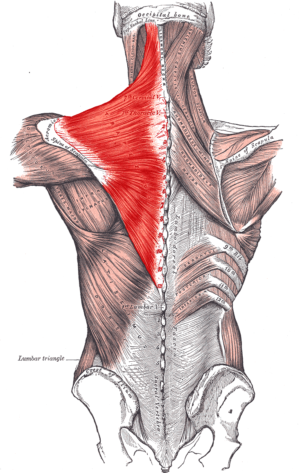
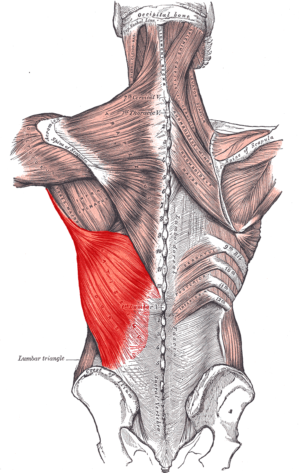 Rucking a 45 pound pack with a tool up and down a mountain is tough. Compound this with the fact that you are running a chainsaw tank-for-tank with your partner and it’s no wonder your back is tighter than a snare drum. There are nearly 20 muscles that attach to the shoulder blade, but breaking everything down into only two movements can handle most of them.
Rucking a 45 pound pack with a tool up and down a mountain is tough. Compound this with the fact that you are running a chainsaw tank-for-tank with your partner and it’s no wonder your back is tighter than a snare drum. There are nearly 20 muscles that attach to the shoulder blade, but breaking everything down into only two movements can handle most of them.
Even though line gear packs are designed to distribute weight primarily through the hips, the straps that overlay the shoulders must distribute some of the forces through the shoulders. Swinging a tool and wearing line gear is the perfect combination to cause shoulder pain, tightness, and scapular/ “shoulder blade” dysfunction. Glancing at the Wikipedia artwork, you will notice the muscles in red as the trapezius muscle on the left and the lats in the picture on the right. This muscle tune-up trick can be done quick and easy by placing a lacrosse ball on any tender or tight spots in the general areas of these muscles and lying down on a firm surface. After you have rested your back on top of the ball, you can use arm movement on the same side to really dig into those areas that need attention.
The Movement:
- Perform a slow reach overhead focusing on the painful muscle.
- Pause for a second or two at your highest point and slowly lower back towards the ground.
- Repeat this multiple times over the course of about 30 seconds and then roll off the ball and allow yourself 30 seconds to recuperate. You can repeat this same sequence one to two more times each session.
Though the overhead movement is generally effective for the majority of the upper back, you may find that the across body reach/stretch (as seen below) is able to deliver deeper, more targeted, relief when you have tight spots between the shoulder blades.
The Movement:
- Repeat the process of lying with your back down on the ball
- Literally – give yourself a hug! Reach across your body and hold for 5 to 10 seconds. You can use the opposite arm if needed to hold yourself in this position so you don’t accidentally roll off the ball.
- Relax and repeat this movement over the course of 30 seconds to a full minute. Give yourself 30 seconds to relax and then repeat the sequence one or two more times.
Lower Back and Hips
It’s almost a given that most people will experience some level of low back pain in their lifetime. As a firefighter, you are at a greater risk having to bend forward to cut line, pull hose, run a chainsaw, and muscle around a pack for 16 hours. Here we have put together a trick for addressing low back tightness which should help you keep pounding away at the job you love.
There are numerous muscles that make up your low back. When these muscles are working on overdrive they hypertrophy and become tender to pressure. The next movement can address these sore spots by utilizing leg movements instead of the arms. It may take some playing around on your part to find which spots can benefit the most, but the sequence is generally the same.
The Movement:
- After placing the ball against the tight or tender position, perform a single leg march with the leg that is on the same side of the ball. In the picture above, I only raise my leg partially which may be better for those of you who need to start slowly. If you want some deeper work done, bring your knee up even closer to the shoulder.
- Return the foot to rest on the ground before repeating the movement for repetitions over the course of 30 seconds. Rest 30 seconds and repeat.
Don’t Forget – Listen to Your Body
Becoming self-aware and in tune with your body also means that it is important to not simply push through any abnormal sensations that could arise.
- If you get any numbness or tingling anywhere, give yourself a short break to make sure it goes away. If it continues – stop the exercise! This is a sign of possible nerve or vascular compression and you should never push through this.
- You should expect to be sore immediately after doing these exercises. If the soreness leads to increased pain that lasts more than 24-48 hours, then stop! You can try some gentle stretching or less invasive self-massage techniques with a foam roller.
- Try to keep the ball to bigger muscle areas (e.g. back, legs, etc.) that need your attention. You should never roll out any superficial areas where nerves and blood vessels can be disrupted.
If none of these movements are working for you, it may be time to try some methods suggested by medical professionals. One of these is chiropracty, which you can access at chiropractor Doncaster, and is supposed to realign your back for successful pain relief. Other methods may be suggesed depending on the situation.
Closing Thoughts
It is my goal to empower all of you to try out self-maintenance and be more aware about taking care of your body. The fire season is a long and grueling beast, but you also want to be able to enjoy your family, go skiing or surfing all winter, and return to battle the flames again the following season. To accomplish this, you need to take care of those nagging injuries now, and if it is something that isn’t getting better then go see a licensed medical professional.
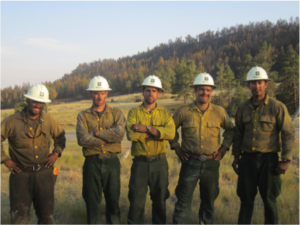
ABOUT THE AUTHOR:
Anthony Harrell spent three years with the Ukonom Hotshots. His adventures in fire inspired him to pursue a career in Physical Therapy, and he recently graduated from the Doctor of Physical Therapy program at the University of California, San Francisco (UCSF) / San Francisco State University.
He lives in the San Francisco Bay Area. He has been a contributor to Hotshot Fitness since 2016. He can be reached at anthony [ at ] hotshotfitness.com
Interested in writing for us? Check out our contributor guidelines for more information.
